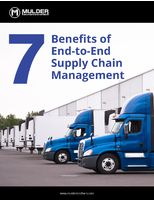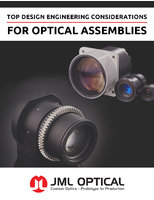Voluntary Standards cover horse racing and mold removal.
Press Release Summary:
Released by ASTM International, ANSI/ASTM F2681-2008 standard covers design and minimum performance criteria as well as associated test methods for body protectors used in horse sports and horseback riding. Incorporating latest techniques and technology for remediation of damage caused by mold, ANSI/IICRC S520-2008 procedural standard aids cleaning professionals in providing highest quality of service when faced with task of mold removal.
Original Press Release:
Voluntary Standards Cover the Spectrum: from Horse Racing to Mold Removal
In an effort to communicate the vital role that standards play in daily life, the American National Standards Institute (ANSI) will publish, on an ongoing basis, a series of snapshots of the diverse standards initiatives undertaken in the global and national standards arena, many of which are performed by ANSI members and ANSI-accredited standards developers. Two of the latest selections follow:
Horse Racing
Riding a horse without proper safety equipment can be extremely dangerous and may cause permanent, debilitating and even life-threatening injuries. Helmets have long been a requirement for riders to aid in preventing head injuries, but protecting a rider's torso and back is equally important. A recently released standard from ASTM International, an ANSI audited designator and organizational member, seeks to increase horseback riding safety for professionals and amateurs alike.
ANSI/ASTM F2681-2008, Specification for Body Protectors Used in Equine Racing, covers the design and minimum performance criteria and associated test methods for body protectors used in horse sports and horseback riding. The new American National Standard provides requirements for the material used, protector assembly, extent and form of protective material, attachments, dimension, sizing and body coverage of body protectors. ANSI/ASTM F2681-2008 defines five testing procedures that body protectors are subject to: shock attenuation test, penetration and deformation test, impact sites test, padding separation test and closure test. The standard also stipulates that prior to testing each body protector should be conditioned in accordance with ambient temperature, low temperature, high temperature and water immersion.
ASTM International is a not-for-profit, membership organization that provides a forum for the development and publication of voluntary consensus standards for materials, products, systems and services. ASTM represents producers, users, consumers, government and academia from around the globe that develop technical documents used as a basis for manufacturing, management, procurement, codes and regulations in areas such as steel, petroleum, medical devices, property management and consumer products, as well as many others.
Mold Removal
Mold can grow inside a home or business when excessive warm, moist conditions are present for an extended period of time. The problem can originate from leaky roofs, windows, pipes, flooding or from moist air condensing on cool surfaces, and is most common in areas of high humidity such as basements or showers. To aid cleaning professionals in providing the highest quality of service when faced with the task of mold removal, the Institute of Inspection, Cleaning and Restoration Certification (IICRC) has published ANSI/IICRC S520-2008, Standard and Reference Guide for Professional Mold Remediation.
ANSI/IICRC S520-2008, an update to the 2003 edition, is a procedural standard that incorporates the latest techniques and technology for the remediation of damage caused by mold. The recently released American National Standard is based on reliable remediation and restoration principles, research and practical experience, and attempts to combine essential academic principles with practical elements of water damage restoration for technicians facing mold remediation challenges. ANSI/IICRC S520-2008 is the result of collaboration among scientists, public health professionals, industrial hygienists, remediation contractors, restoration service companies, cleaning and restoration training schools, trade associations that service the professional restoration industry, allied trade-persons, and others with related professional and practical experience.
IICRC is an ANSI-accredited standards developer and organizational member that publishes standards and acts as a certifying body for the flooring inspection, floor covering and specialized fabric cleaning and disaster restoration industries. The IICRC represents more than 4,600 certified firms and more than 46,000 certified technicians in 30 countries.




